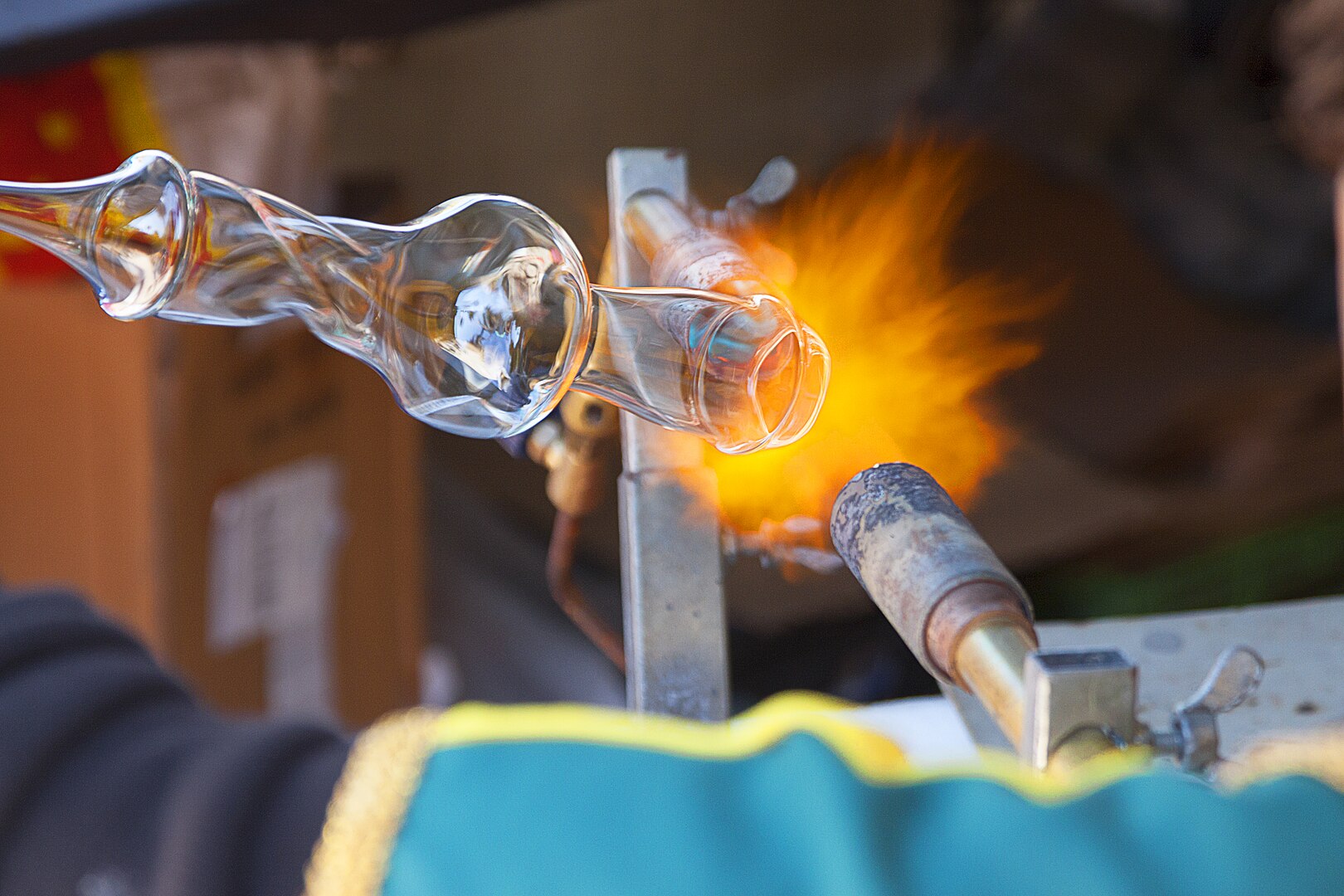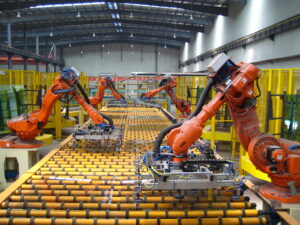 BBC News
BBC NewsBorrowing was £17.4bn last month, the second highest October figure since monthly records began in 1993.

George Achebe considers the options if you want a career in our most transparent material
Glass is one of humanity’s greatest unsung heroes. We see through it but rarely see it. From the smartphone screens we tap daily to the wine glasses raised in celebration, from the windows that frame our cities to the fibre optic cables carrying our conversations, glass is both ubiquitous and invisible. It is an industrial workhorse, an artistic medium, and a scientific marvel—all at once.
Yet, despite its essential role in modern life, the glass industry faces profound challenges. British glass manufacturing, once the envy of the world, now finds itself at a critical juncture. The sector employs over 23,000 people directly, with thousands more in associated supply chains, yet it must navigate an increasingly complex landscape of global competition, soaring energy costs, and urgent sustainability demands.
These challenges were front and centre at the 695th Lord Mayor’s Lecture, a high-profile online event that convened leading minds from science, manufacturing, and business to discuss the past, present, and future of glass.
Professor Tim Connell, an emeritus professor at City, University of London, introduced the session with a reflection on glass’s unseen impact. “Without glass, we wouldn’t even be able to hold this webinar—since fibre optic cables, made of glass, are the backbone of our global communication network,” he noted.
Shape-Shifting Material
Dave Dalton, CEO of British Glass, was among the speakers taking the audience through the scientific and practical aspects of glass. “Glass is not just a material—it is a material state,” he explained. “It’s a frozen liquid with no long-term structure, making it one of the most adaptable substances known to humankind.”
He went on to highlight its surprising applications. “Most people think of glass as something we look through rather than at. But glass plays a fundamental role in everything from medical instruments to high-performance engines, wind turbine blades, and even space exploration.”
Richard Katz, CEO of Glass Futures, echoed this sense of boundless potential while stressing the need for transformation. “We are building a future where sustainability and innovation go hand in hand,” he said. “The glass furnace of tomorrow will be radically different from today’s—potentially electric or hydrogen-powered rather than gas-fired.”
Mark Holford, a Court Member and Charity Trustee of the Worshipful Company of Glass Sellers, underscored the material’s dual identity. “Glass is arguably mankind’s most versatile material,” he told The World of Glass Museum. “It’s been with us for millennia, yet we’re still discovering new applications and properties. What other material can be both a work of art and a critical component in quantum computing?”
Holford, who has amassed a collection of over 200 pieces of contemporary glass art, understands this duality well. His passion for glass extends beyond its industrial applications to its role in creativity and craftsmanship. The workforce in the glass sector reflects this diversity: on one end, engineers and scientists developing new formulations and manufacturing techniques; on the other, artisans preserving centuries-old traditions of glassblowing, cutting, and engraving.

The Next Generation of Glassmakers
One of the biggest concerns raised at the lecture was the future of the glass industry’s workforce. Katz has long been an advocate for fostering a new generation of talent. At the Glass Focus Awards 2023, he stressed: “The glass industry offers extraordinary career opportunities, from highly technical roles in research and development to hands-on creative positions. We need programmers and artists, chemists and craftspeople. The challenge is ensuring that these skills aren’t lost as veteran workers retire.”
Glass then is at a crossroads. It is important for young people to know that there’s an opportunity here: one which they might, like the material itself, look straight through if they didn’t know where to look. My experience of glass is that it is a kindly sector and one which attracts a broad range of curious and quirky types.
James Badgett, CEO of the Angel Investment Network, says: “It’s an interesting point that often people don’t think sector-first when it comes to their careers – they think the wrong way round about what they’re good at. That’s important too but in a highly disrupted economy, it’s a good idea to think of those things which are definitely going to be around. AI needs glass – so I think it’s a good sector to look at.”
The Energy Crisis and Global Competition
Dalton has been vocal about the pressures facing UK manufacturers, particularly the rising cost of energy. In an op-ed for Manufacturing Today, he warned: “Energy costs are crippling our sector. Glass manufacturing is energy-intensive—there’s no getting around that fact. When UK manufacturers are paying significantly more for energy than their European counterparts, let alone those in Asia, it creates an uneven playing field that no amount of innovation can fully overcome.”
At the Lord Mayor’s lecture, he reiterated the challenge. “Glass should be at the forefront of the green transition. It is infinitely recyclable without quality degradation. Solar panels depend on glass. Double and triple glazing reduces energy consumption in buildings. But manufacturing glass itself remains carbon-intensive, and transforming production processes requires massive investment.”

Batch feed doghouse of a glass furnace
Some of that investment is beginning to materialize through initiatives like Glass Futures, an industry-backed research and technology organization developing a £54 million Global Centre of Excellence in St Helens. The facility aims to revolutionize glass production, reducing carbon emissions while enhancing the UK’s competitive position.
Glass in Flux
The challenges facing the UK glass sector are mirrored on the global stage, where geopolitical shifts, trade policies, and environmental regulations add further complexity.
Katz, speaking at a Glass International panel, noted: “The glass industry is inherently global. Raw materials may come from one continent, be processed in another, and the final products shipped worldwide. Any disruption to this ecosystem has cascading effects.”
Dalton, addressing a House of Lords Industry Briefing, offered a perspective on the policy landscape: “On one hand, a rollback of carbon reduction targets could temporarily ease pressure on energy-intensive industries like ours. On the other, it risks putting the US—and by extension, anyone trading with them—out of step with global sustainability trends. Short-term relief could mean long-term competitive disadvantage.”
Meanwhile, China’s glass industry remains dominant, producing over half the world’s glass. As The Economist reported in a special manufacturing issue: “China’s vertically integrated supply chains allow for a level of efficiency that Western manufacturers struggle to match. While once known for lower-quality glass, China is now a leader in architectural glass, solar panels, and high-end consumer goods.”
Transparent Future
Amid these complexities, the British glass sector is searching for a path forward—one that builds on its heritage while embracing technological advancements.
Dalton sees the industry’s future in specialization: “Our future lies in specialized products, innovative materials, and processes where intellectual property and technical expertise outweigh raw production costs.”
Katz envisions a synergy between tradition and modernity. “British glass has an incredible heritage of craftsmanship. When we combine that with cutting-edge research in materials science and digital manufacturing, we create products that cannot be easily replicated elsewhere,” he told Glass & Glazing Federation Quarterly.
Education will play a pivotal role in ensuring this vision becomes reality. Programs supported by the Worshipful Company of Glass Sellers aim to equip future generations with the skills needed to thrive in both technical and artistic roles.
“We need to reframe glass careers for young people,” argued Holford in a discussion with Crafts Magazine. “This isn’t just about industrial jobs—it’s about being at the forefront of materials science, sustainable manufacturing, and artistic innovation.”
For a material that is transparent, the future of glass remains anything but clear. Yet its resilience, versatility, and continued relevance make one thing certain: this ancient material will shape our modern world in ways both visible and unseen.
As Dalton puts it: “Glass has survived for millennia because of its adaptability. I have no doubt it will survive for millennia more. The question is whether the UK will remain at the cutting edge of its production and application.”
In an industry where fragility and strength coexist in perfect harmony, the same duality seems to define its future prospects.